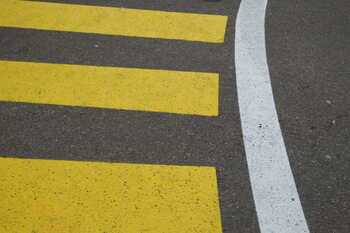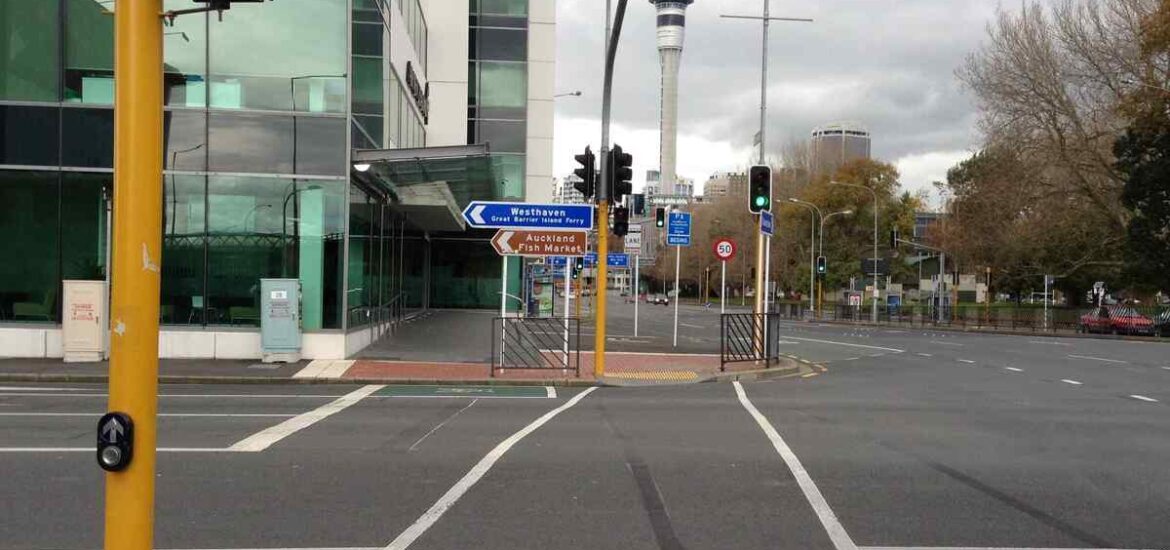The intricate web of lines, symbols, and colors on our roads isn’t just for aesthetics; it’s a sophisticated system of communication that keeps us safe and organized. Pavement markers play a crucial role in guiding drivers and pedestrians, promoting road safety, and ensuring smooth traffic flow. In this comprehensive guide, we’ll explore the various types of pavement markings and markers you encounter on the road, shedding light on their meanings and significance.
Chapter 1: Basic Pavement Markings
Solid White Lines
Solid white lines mark the right edge of the road and separate traffic moving in the same direction.
Solid Yellow Lines
Solid yellow lines are used to separate traffic moving in opposite directions.
 Broken White Lines
Broken White Lines
Broken white lines separate lanes within the same direction of travel and can be crossed.
Double Yellow Lines
Double yellow lines indicate a no-passing zone, where crossing to the other side of the road is prohibited.
Solid White Line and Broken White Line
This combination is often used to indicate a lane change is allowed but should be done with caution.
Chapter 2: Special Pavement Markings
Crosswalks
Crosswalks are marked with white lines and indicate pedestrian pathways across the road.
Stop Lines
Stop lines are thick, white lines found at intersections, signaling where vehicles should come to a complete stop.
Yield Lines
Yield lines are used at yield signs or when merging onto a busy road, indicating where a driver should yield to oncoming traffic.
Railroad Crossings
Pavement markings, often with an “X” symbol, signify railroad crossings, reminding drivers to be cautious and stop when necessary.
Chapter 3: Lane Markings
Arrow Markings
Arrow markings indicate the direction of travel for a specific lane, helping drivers choose the right lane for their intended route.
Bike Lane Markings
Bike lane markings consist of symbols and lines, designating a dedicated lane for cyclists.
Turn Lane Markings
Turn lane markings guide drivers when making left or right turns, helping to streamline traffic flow.
Chapter 4: Symbols and Special Markers
Pedestrian Symbols
Symbols of people walking or arrows often indicate pedestrian pathways and school zones.
School Zone Markers
Flashing yellow lights and “SCHOOL ZONE” markings alert drivers to reduce speed and watch for children.
Stop Signs and Pavement Markers
White stop lines are often found at stop signs, indicating where vehicles must halt.
Disabled Parking Markings
These blue-and-white markings designate parking spaces for individuals with disabilities.
Chapter 5: Roadway Warnings
Speed Limit Markings
Speed limit signs and pavement markings help regulate traffic speed on different road types.
Warning Symbols
Symbols like arrows, chevrons, and exclamation points warn of upcoming hazards or changes in road conditions.
Construction Zone Markings
Orange work zone markings indicate areas where construction or road maintenance is taking place.
Chapter 6: Highways and Interstates
Lane Control Arrows
These arrows help manage traffic flow on highways by indicating which lanes are open or closed.
 Exit and Entrance Ramps
Exit and Entrance Ramps
Markings guide drivers in and out of highway exits and entrances.
HOV Lane Markings
High-occupancy vehicle (HOV) lanes are marked with diamond symbols and restrictions for carpooling.
Chapter 7: Shared-Use Paths
Shared-Use Path Markings
Shared-use paths, for pedestrians and cyclists, are marked with symbols and lines to indicate the proper lanes.
Trailblazing Markings
Trailblazing markers guide travelers along scenic routes and trails, ensuring they stay on the right path.
Chapter 8: Colorful Roadway Markings
Blue Pavement Markings
Blue markings, such as for handicapped parking, designate specific parking or curb regulations.
Green Pavement Markings
Green markings indicate areas for bicycle lanes or pedestrian crosswalks.
Conclusion
Pavement markings and markers are the unsung heroes of our roadways, silently guiding us through our daily journeys while promoting safety and order. Understanding the meaning behind these markings is not only important for passing your driver’s test but also for being a responsible and informed road user. So, next time you’re on the road, take a moment to appreciate the intricate language of lines and symbols beneath your wheels, working tirelessly to keep you safe and on the right path.

